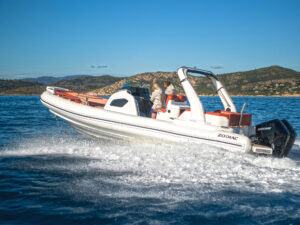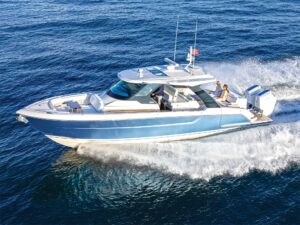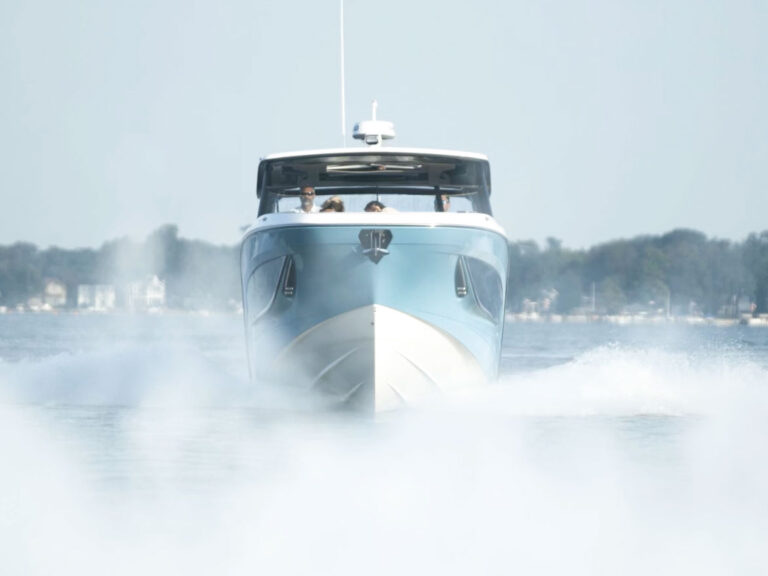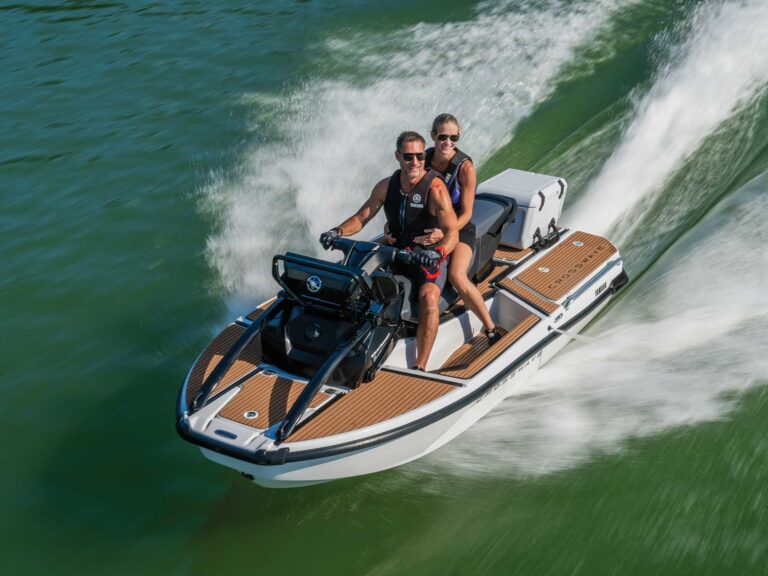Shortly after I had a new fuel tank installed, I discovered a problem — a boat gas tank vent problem. It was difficult to put gas in the tank. The nozzle continually shut down, as if the tank were full, until a gusher of gas spewed from the vent. Then I could fill up just fine.
When I removed the portion of the deck covering the fuel tank to investigate, the cause became readily apparent. The vent hose had been shoved down, creating a sag, or belly, and causing fuel to become trapped in the line, which blocked the tank’s ability to vent.
Not only can this boat fuel tank vent cause issues when filling up, but it can also starve the engine of fuel and leave you stranded.
This experience taught me one of the most important lessons about venting fuel tanks on boats. Since that time, the subject has grown more complicated with the EPA-mandated evaporative emissions regulations. Yet the principles behind venting still hold.
Have you ever had a problem with your boat’s gas tank not venting properly? Here are five things you should know to conduct proper inspection and maintenance on your fuel tank’s vent system.
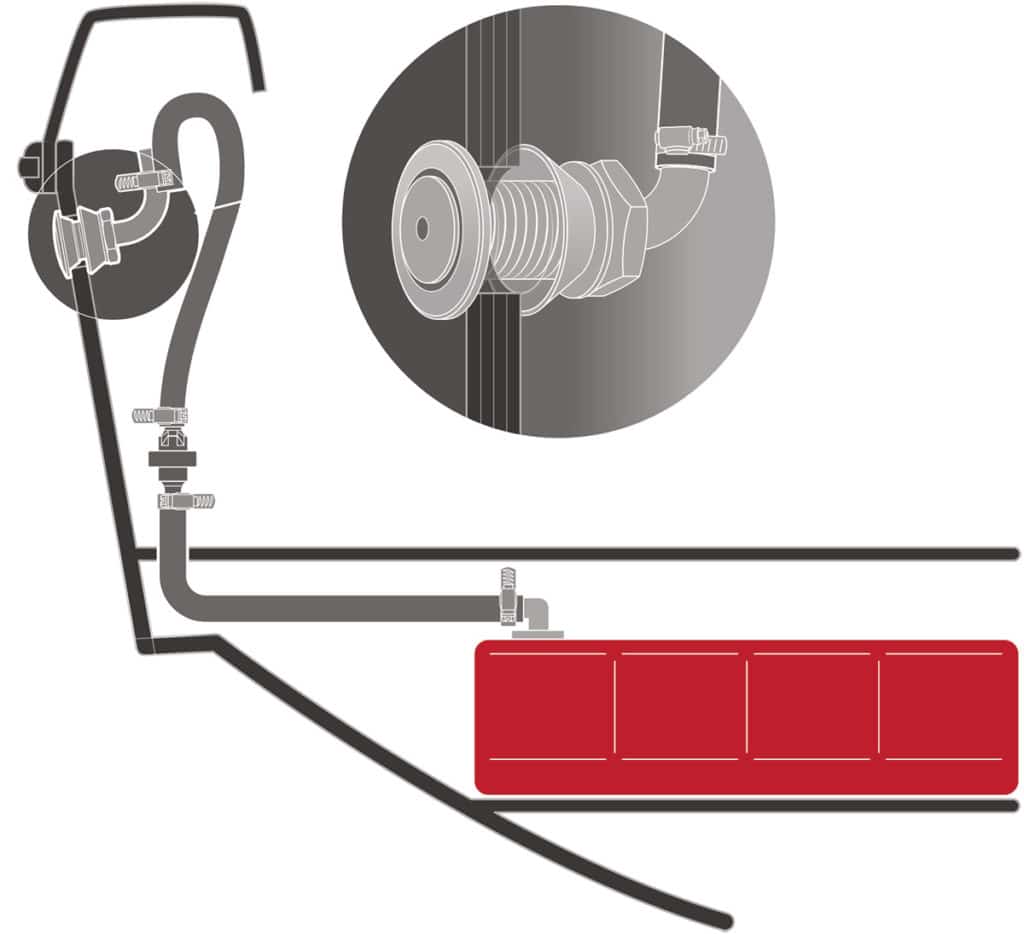
1. Don’t Trap Fuel in Your Boat’s Vent Line
When installing a vent hose, avoid sags — aka traps — anywhere in the vent line. As I found out the hard way, these allow fuel to puddle, preventing the marine fuel tank vent system from functioning properly. A typical vent line will run sideways across the top of the tank until it reaches the hull side and then angle upward to the vent fitting. The hose should run as straight as possible at this point in a manner that allows any fuel to drain back into the tank via gravity.
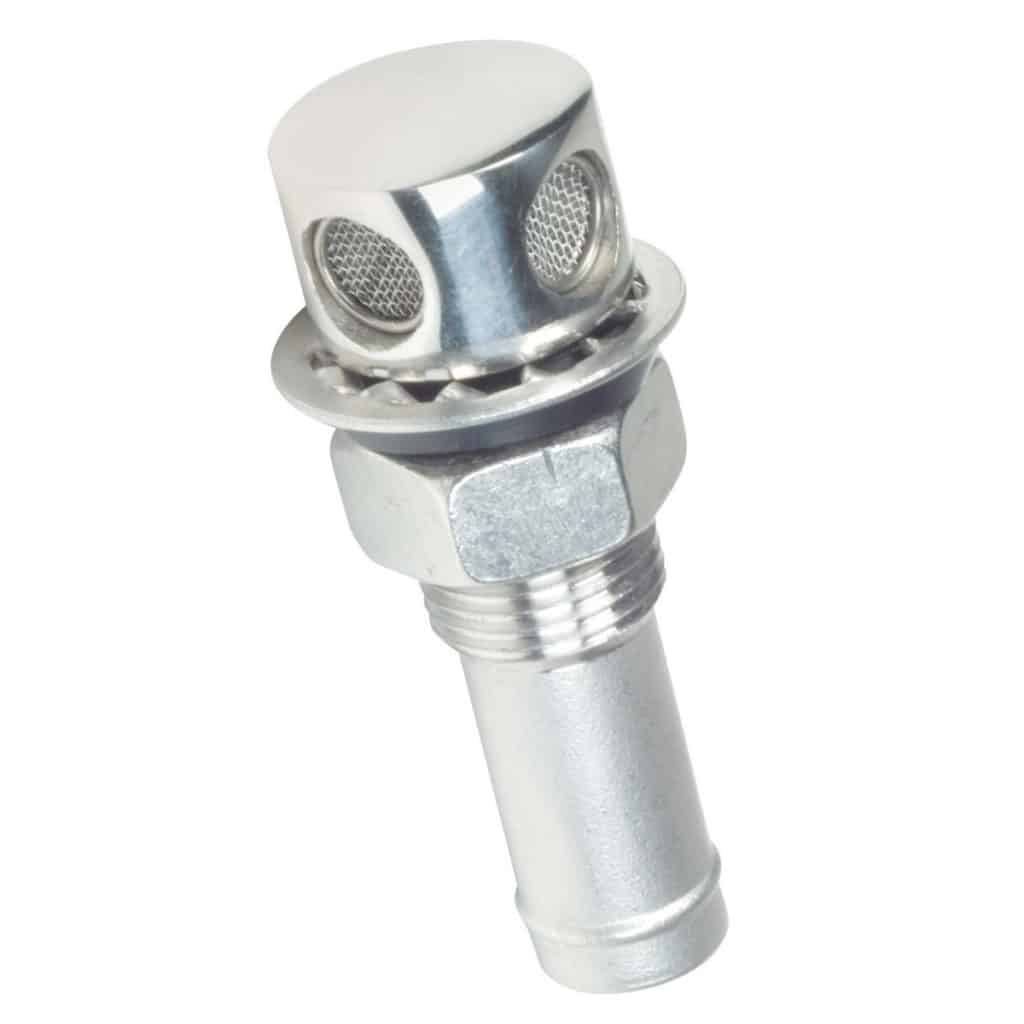
2. Clean the Screen on your Fuel Vent
Many fuel vents have fine-wire screens that keep out minute debris as well as nesting insects and spiders. Some screens also serve as flame arrestors, blocking sparks that could ignite fuel vapors. Over time, however, corrosion, salt crystals and grime can build up on the screen, impairing the vent’s ability to breathe.
When your boat gas tank is not venting, this is the first area to check. If the screen looks clogged, use a small wire brush to clean away the gunk. If corrosion has eaten away at the mesh, replace the vent.
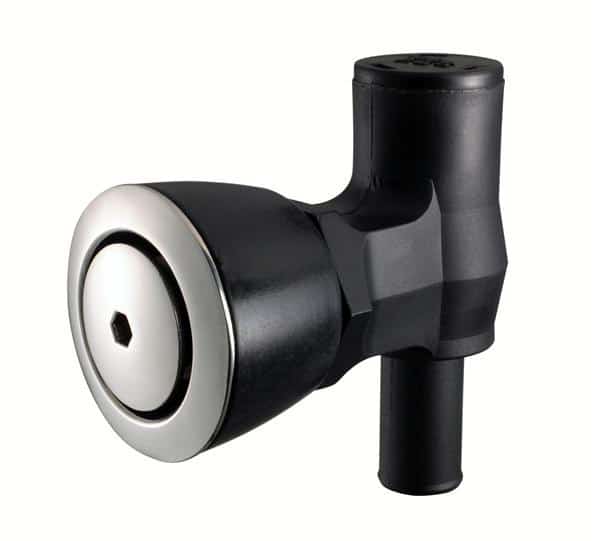
3. Keep Your Through Hull Vent Dry from Water
Through-hull fuel vents are designed for installation on a vertical (or slightly angled) exterior hull surface so that fumes vent outboard and not inside the boat. Yet this also creates one of the biggest problems with vents: the tendency to let water in. One key to mitigating this issue is mounting the vent fairly high, so it’s not bathed in spray. Another is angling the vent opening aft and slightly downward, shielding it from oncoming waves while underway and preventing rain or dew from getting in.
In addition, a number of vents on the market today offer designs that help shed water. One of the simplest is a 90-degree upward bend in the hose fitting. Space permitting, this allows you to create an upward loop in the line before securing it to the hose barb. Any water that splashes in tends to drain back out.
More sophisticated designs include Perko’s through-hull vent, which includes an integral splash guard. Attwood’s 90-degree P-trap fuel tank vent features a baffle chamber that traps any errant water and ushers it back out. This vent also mounts flush against the hull; its low-profile design keeps it from becoming damaged by docks or pilings. Whichever type of vent you are considering, make sure it is Coast Guard approved.
Here’s a quick tip: When washing the boat, always point the spray nozzle aft while hosing down along the side of the boat. This will help keep water from shooting into the vent opening.
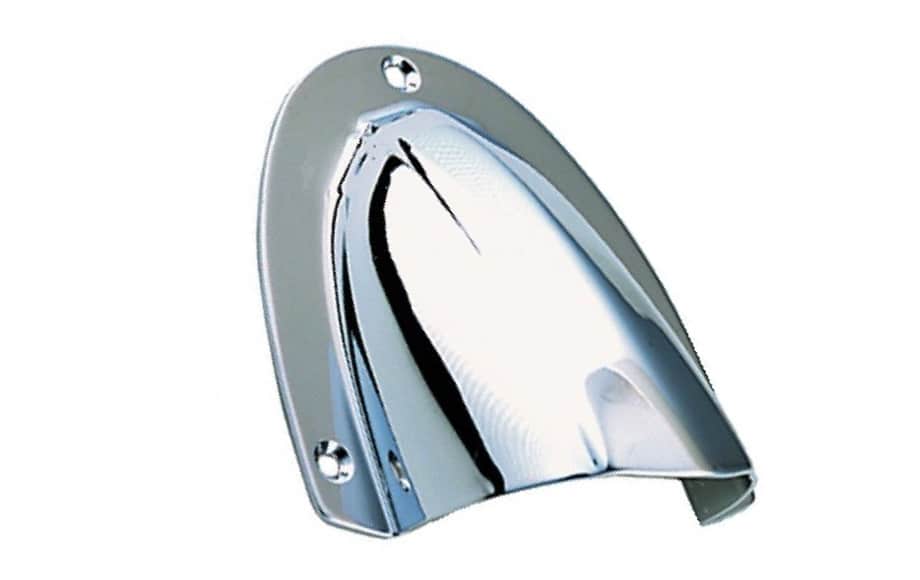
4. A Clamshell Cover Helps Protect a Fuel Vent
If your boat takes a lot of heavy spray and you’re experiencing problems with water in the fuel, consider covering the vent with a clamshell cover. You can get a chrome-plated brass model such as the Perko 2-inch-wide clamshell, a stainless-steel version like the Seafit 2 1/8-inch-wide version, or the ABS-plastic SSI 2 5/8-inch-wide clamshell. As for positioning the vent opening, angle the clamshell aft and slightly downward to deflect oncoming seas as well as rain.

5. Utilize a Fuel Surge Protector
A no-spill valve (aka fuel-surge protector) keeps fuel from spewing out of the vent when you fill the tank. Not only is this environmentally friendly, but it also prevents the hull from being stained by spilled gasoline or diesel. You’ll find in-line, no-spill valves offered by a number of brands such as Attwood and Racor. Green Marine offers one that whistles as you’re fueling but goes silent to indicate the tank is nearly full.
With hose barbs on each end, each device installs in the vertical run of the vent line with hose clamps. Be sure it’s right side up, because these valves rely on gravity to operate properly. Attwood offers the P-trap fuel surge protector that integrates a vent and no-spill valve into one unit.
In my experience, no-spill valves can malfunction as they age. Gummy fuel residue causes the ball inside the valve to stick and prevents the tank from breathing. In my case, this led to stalls before I diagnosed the problem. If you shake the valve and the ball inside does not immediately rattle, the valve’s bad. It’s time to replace it.



